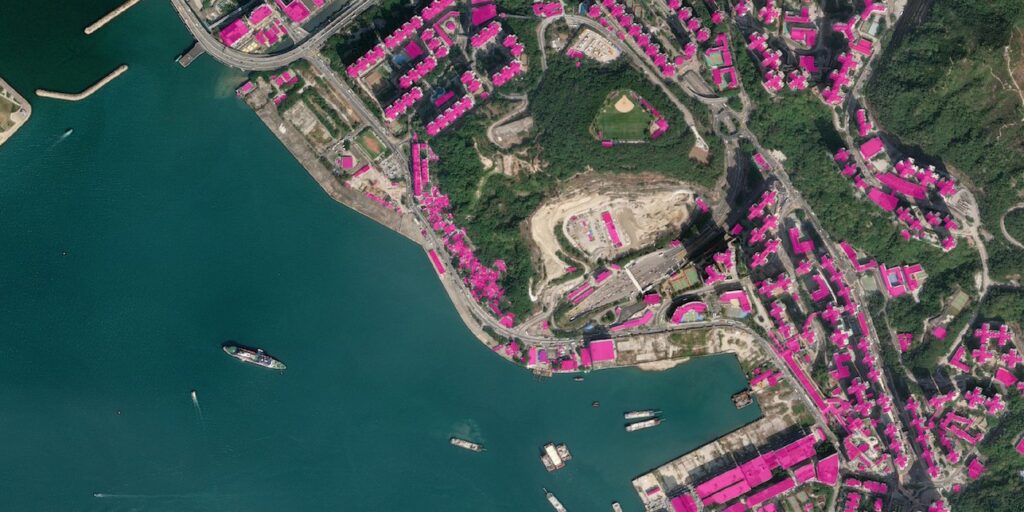 WASHINGTON: The NRO is making a major shift in its strategy for buying commercial satellite imagery later this year, abandoning the Intelligence Community’s long-standing monogamous relationship with Maxar Technologies to make way for new vendors as it moves beyond its current EnhancedView program.
WASHINGTON: The NRO is making a major shift in its strategy for buying commercial satellite imagery later this year, abandoning the Intelligence Community’s long-standing monogamous relationship with Maxar Technologies to make way for new vendors as it moves beyond its current EnhancedView program.
“This next phase includes the release of a future Request for Proposal (anticipated in the 3rd quarter of FY20), followed by the award of multiple commercial imagery contracts in the 4th quarter of FY20,” NRO spokeswoman Laura Lundin told me in an email.
The question left unanswered is whether planned new contracts will split the some $900 million NRO has set aside through 2023 for optioning images from Maxar, or add more funds to the pot. And, as Lundin reminded me, the spy satellite agency never comments on its budget.
The plan for multiple contracts represents a sea-change from past IC practice in buying commercial satellite imagery — established by the National Geospatial-Intelligence Agency (NGA) prior to the 2017 decision to flip acquisition authority to the NRO, under the Commercial Systems Program Office (CSPO) headed by Peter Muend.
For nearly the past decade, DigitalGlobe, which was subsumed by Maxar Technologies, had been the sole source of commercial satellite imagery used by the IC under the EnhancedView program series. (NGA signed the original EnhancedView contract in 2010 with DigitalGlobe and GeoEye, and in 2012 GeoEye was forced to merge with DigitalGlobe due to NGA budget cuts.)
NRO in August 2018 took over responsibility from NGA for the latest contract with Maxar, called the EnhancedView Follow-On program, in effect extending the long-running IC relationship as its central provider of commercial electro-optical (EO) imagery. That $300 million contract secured one year’s access to the the company’s WorldView and GeoEye satellites, and included an option for another year (through August 2020) at the same annual price. NRO granted Maxar a one-year extension of that contract in November 2018, worth another $300 million, which included annual options (also each worth $300 million) through 2023.
As I reported last year at GEOINT in San Antonio, NRO signaled a change of acquisition strategy when it awarded startups BlackSky and Planet what it called “study contracts” to evaluate their capabilities. Both firms are offering low-cost imagery using large constellations of small satellites that provide the ability to revisit a ground target more often; whereas Maxar has a smaller number of very high-resolution satellites with lower revisit rates.
Maxar currently operates four EO satellites: WorldView-1, GeoEye-1, WorldView-2, and WorldView-3. The latter satellite, the newest of the bunch launched in 2014, can provide full color images with a 31cm resolution.
NRO also gave Maxar a study contract, similar to those awarded to Planet and BlackSky, to look at its planned future capabilities. The firm is moving to a larger constellation size with the planned WorldView Legion, which Maxar’s Chief Technology Officer Walter Scott told me in an email will comprise six satellites. WordView Legion will boost re-visit rates over targets at mid-latitudes on Earth to 15 times a day, “more than triple our capacity to collect sub-30 cm resolution imagery.” WorldviewLegion is set to launch in 2021.
“When the NRO awarded commercial electro-optical (EO) imagery study contracts in late May 2019 (BlackSky, Maxar, and Planet), we stated that these study contracts were awarded to companies whose January 2019 Request for Information response, which considered existing and planned commercial EO capabilities, was evaluated as credible in terms of mature and/or planned capabilities or a viable business case,” Lundin explained in her email.
“These studies were designed to help validate performance assertions and demonstrate the capability to satisfy all or some of the commercial-class requirements that the NRO received from the GEOINT Functional Manager (NGA). The study results, along with recent market research and modeling analysis, will inform the next stage of NRO’s commercial EO imagery acquisition strategy.”
In effect, NRO’s current plan to grant new contracts at the end of this year means some of the funds that would have gone to Maxar between November 2020 and November 2023 are now likely go to other providers — unless the NRO has decided to increase its commercial imagery budget. Indeed, a budget increase may be likely — as NRO’s job is to fulfill the demand signal provided to it by NGA, which is responsible for managing the requirements process by amalgamating the needs of various government agencies and military Combatant Commands. And as I reported last week, NGA sees a growing appetite for commercial imagery.
“Our customer’s requirements are changing – they need both high resolution and rapid revisit; they need greater persistence; they need spectral diversity, etc. Commercial imagery can help satisfy these diverse needs,” Lundin emailed me. “NRO’s approach to commercial imagery—and commercial products and services in general—is best characterized as ‘buy what we can, build only what we must,’ and we remain committed to fully embracing commercial capabilities across all NRO mission areas.”
As for Maxar, the company is keeping a stiff upper lip, stressing its long-standing relationship with the IC.
“Maxar has been delivering Earth Intelligence solutions to the U.S. Government for more than 20 years,” Scott said. “Maxar provides assured tasking access to our satellite imaging constellation, which can uniquely deliver the resolution, currency, accuracy, timeliness and spectral diversity required to support a diverse set of national security missions.”
“Maxar aims to continue our trusted partnership with the U.S. Government for many years to come,” he added, “and we are making capital investments to ensure we are best positioned to meet an expanding set of government requirements.”
And while Planet and BlackSky were the only other providers granted study contracts, Lundin stressed that the RFP will be a “fair and open competition.”
NRO does, however, have a policy of contracting with only US firms — or the US subsidiaries of foreign firms that have successfully jumped all the security hoops under the Foreign Control, Ownership or Influence (FOCI) process. So this limits the already small pool.
Planet currently has 150 satellites in orbit operating across two distinct constellations, a spokesperson told me in an email today. The SkySat constellation has 15 high-resolution satellites, with six more ready for launch this year — with Planet working on achieving a 50 centimeter resolution for its imagery products. The second constellation is called “PlanetScope” and comprises 130 Dove satellites, capable of imaging the entire Earth’s landmass on a daily basis at 3-meter resolution. Last year, the firm began launching its next generation birds, called “SuperDoves,” that will sport higher imagery quality, the spokesperson said.
Asked about Planet’s intentions via the upcoming NRO contest, the spokesperson said: “Our commercially available capabilities today, such as our intra-daily rapid revisit of high resolution imagery, will greatly support the NRO’s complex mission. We are increasingly encouraged by the NRO’s engagements to expand their commercial imagery portfolio and we look forward to the opportunity to contribute.”
It also should be noted that Planet, too, has had a relatively long relationship with the IC — working closely with the USG for the past five years, as the spokesperson pointed out. Prior to the May 2019 NRO study contract, Planet had been providing its imagery, as well as analytics, to NGA under an experimental contract arrangement that dated back to 2016.
NGA’s head of commercial business operations, David Gauthier, told me in a recent interview that NGA in October finally had completed the transition of its contractual relationship for Planet’s imagery to NRO.
“We transferred that contract over to the NRO,” he said. “The CSPO has put Planet on contract for that work, and is continuing to deliver [Planet’s imagery] to our users worldwide,” he said. “So, there was no break in service.”
BlackSky, currently has four 1-meter satellites in orbit, the the latest one launched this past August. It plans to launch another 20 satellites being developed by LeoStella, a joint venture between BlackSky’s parent company Spaceflight Industries and French firm Thales Alenia Space. The company didn’t respond to a request for comment by presstime.
Army inching towards late FY25 Chinook Block II full-rate production contract
Boeing recently announced the Block II helo’s first maiden flight and plans to deliver the first production aircraft to the service in the coming weeks.


























